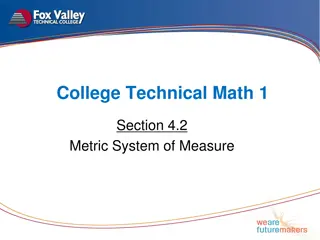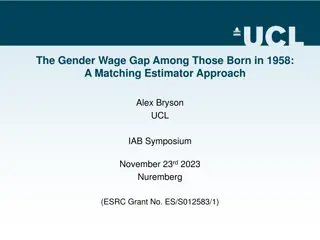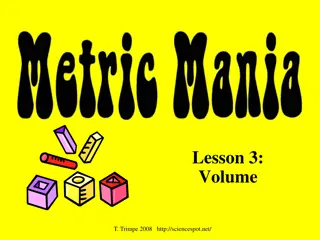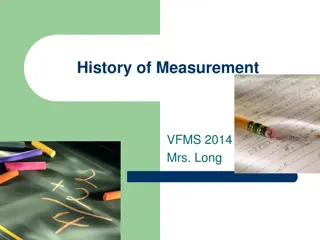Trust Metric Estimator: Computational Model for Trustworthiness Assessment
The Trust Metric Estimator project aims to create a computational model to estimate user trust levels towards system performance over time. It considers social and technical factors, integrating trust, trustworthiness, and economic aspects to aid decision-making. Research includes surveys to identify key attributes affecting trust, leading to user segmentation into segments like High Trust and Trust Seeking. The model assumes competences and seeking behaviors impact trust assessments, with different segments showing varying trust stances. Ultimately, the project seeks optimal decisions for both users and providers based on trust levels.
Download Presentation

Please find below an Image/Link to download the presentation.
The content on the website is provided AS IS for your information and personal use only. It may not be sold, licensed, or shared on other websites without obtaining consent from the author.If you encounter any issues during the download, it is possible that the publisher has removed the file from their server.
You are allowed to download the files provided on this website for personal or commercial use, subject to the condition that they are used lawfully. All files are the property of their respective owners.
The content on the website is provided AS IS for your information and personal use only. It may not be sold, licensed, or shared on other websites without obtaining consent from the author.
E N D
Presentation Transcript
Trust Metric Estimator 19.11.2014 OPTET 317631 | FP7-ICT-2011-8 1
Trust Metric Estimator Objective: A trust computational model estimate a user s trust level towards the performance of a system across time help providers make optimal decisions. Methodology: 1) Identify: the impact of social and technical factors on trust. 2) Develop: computational model(s) for trust estimation, capturing (1). 3) Integrate: trust & trustworthiness level and economic factors in a single optimization problem capture both user s and provider s decisions.
Trust level affecting decisions Trust level : (both technical and social factors) The subjective belief about system trustworthiness. Users may under/over or accurately assess trustworthiness. Trust Related Decisions: (trust-tw correlation and economic factors) Users : To pay the price and buy the offered system (or not). Provider: The trustworthiness and price of the offered system that maximize profits. (utilize the derived knowledge on trust)
Research on the impact of social factors Two Surveys (Y1 & Y2) were conducted aiming to: I. Identify the key attributes that affect the subjective nature of trust. II. Validate the key attributes (comparison between surveys). Support the trust computational model. Surveys data-mining Users Segmentation. Three underpinning attributes: (Anova analysis) 1) trust stance, 2) seeking behavior, 3) competences. Four segments: (K-means clustering Algorithm) 1) High Trust (HT) , 2) Highly active Trust seeking (HATS) 3) Medium active Trust seeking (MATS) , 4) Ambivalent (A)
Validation of users Segmentation Year 1 & 2 Results Repeating Results Total (n=90) HT HATS (n=28) MATS (n=18) A Anova (n=24) (n=20) 1. users attributes) appear with statistical significance. The three underpinning Trust stance Trust related seeking behaviour Trust related competences Mean 3,22 3,52 Mean 3,85 3,14 Mean 3,15 4,27 Mean 2,86 3,34 Mean 3,50 3,01 24,383 ,000 F Sig. 7,260 ,000 2. identified. Four segments were 2,44 2,71 2,42 2,94 1,44 13,361 ,000 * HT = High Trust; HATS = Highly active Trust seeking; MATS = Medium active Trust seeking; A = Ambivalent 3. competence and seeking is dominant in HATS . The aggregate value of 4. dominant in HT . The trust stance is
Towards the Trust Computational Model Assumptions on key user attributes and their impact: 1) Combined factor of competences and seeking determines the accuracy of trustworthiness assessment. HATS : Most accurate assessment of trustworthiness among all segments. 2) Trust stance Determines under/over estimation. HT : Trust is expected to overestimate trustworthiness. 3) In all segments: adequate competences and seeking to distinguish between two different systems. Trust within the same segment is expected to be higher towards a better performing system (compared towards one with lower trustworthiness)
Basic Bayesian Trust Inference Model Trust : Quantifies the subjective probability that the system will provide a successful outcome in the next single transaction. ?(?) ? ? = ?[???? ? ? ,? ? = ? ? + ?(?) Update Process based on outcomes observed: (event driven) After a success: ? ? + 1 = ? ? + ? After a failure : ? ? + 1 = ? ? + ? Here, A=B=1 ????? ????????? ????? as outcomes increase.
Modified Bayesian Inference Model Extended the expected properties to all segments. Followed a self-normalized approach based on the dominant drivers. Captured the differentiations among users (social factors): Initial trust : Initialization of Beta parameters (??,?(0),??,?(0) ). Trust evolution: Different update coefficient for each segment : ??,?? + 1 = ??,?? + ??,? ??? ??,?? + 1 = ??,?? + ??,?























